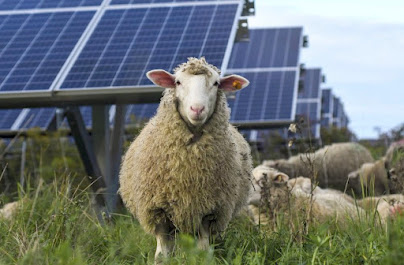US Geological Survey Pennsylvania Waters Fall 2022
Diariesofthediabolical.blogspot.com - The USGS Pennsylvania Water Science Center Fall 2022 Pennsylvania Waters newsletter featuring these articles--
-- Drought Watch Remains For 20 Counties In PA, Lifted For 16 -- USGS Pennsylvania Groundwater Watch [Adams, Chester, Montgomery, Philadelphia, Pike Counties] -- USGS Works With Partners In 15 Cities To Improve Urban Waterways [Philadelphia] -- Long-Term Impacts Of Impervious Surface Change, Roadway Deicing Agent Application On Chloride Concentrations In SE PA Suburban Watersheds -- Flights Above Mid-Atlantic States Map Geology -- Hydrogeologic Study Valmont TCE Superfunding Site, Luzerne County -- Groundwater Quality In Selected Stream Valley Aquifers, Eastern U.S. -- USGS Education Tool Better Illustrates Role Humans Play In Water Availability Visit the Pennsylvania Waters Newsletter webpage for past issues and to sign up for your own copy. For more information on USGS water research in Pennsylvania, visit the USGS Pennsylvania Water Science Center webpage.5 Counties in the region were included in the drought watch issued by Pa.
Readingeagle.com - The state Department of Environmental Protection has declared a drought watch for 36 counties — including Berks, Delaware, Lehigh, Montgomery and Schuylkill — as officials ask for voluntary water conservation in those counties.
“A few counties have experienced very dry conditions over the summer, and a number of others have inched into increasingly dry conditions in recent weeks,” DEP Acting Secretary Ramez Ziadeh said in a release Wednesday. “We’re asking Pennsylvanians in all of these counties to use water wisely and follow simple water conservation tips to ease the demand for water.” The Middle Atlantic River Forecast Center, a division of the National Weather Service, shows significant departures from normal for the named counties for the past 60 days and for the past 90 days.
Montgomery County has the lowest rainfall total over the past 90 days at about 60% of normal, with the other counties not doing much better.
The rainfall totals are from the measurements taken at airfields in the counties and other local sites, massaged by a hydrologist. Nearby Chester and Lancaster counties are near normal and not a part of the alert, showing the hit-and-miss nature of thunderstorms. A squall line crossed the region Tuesday, providing a drink for some areas. The AccuWeather forecast offers no relief, showing sunny and dry conditions across the region for a week. In addition to the five counties in the region, the following counties are on drought watch: Bucks, Bradford, Cameron, Carbon, Centre, Clearfield, Clinton, Columbia, Dauphin, Juniata, Lackawanna, Lebanon, Luzerne, Lycoming, McKean, Mifflin, Monroe, Montour, Northampton, Northumberland, Perry, Philadelphia, Pike, Potter, Snyder, Sullivan, Susquehanna, Tioga, Union, Wayne, and Wyoming. Officials said that residents in the 36 counties are asked to reduce their individual water use by 5% to 10%, or a reduction of three to six gallons of water per day. The department said it is notifying water suppliers in these counties that they need to monitor their supplies and update their drought contingency plans as necessary. The DEP noted that water suppliers or municipalities may ask residents for more stringent conservation actions depending on their local conditions. Conserving at home The department offered the following tips to conserve household water usage: • Run water only when necessary. Don’t let the faucet run while brushing your teeth or shaving. Shorten the time you let the water run to warm up before showering. • Run the dishwasher and washing machine less often and with full loads. • Water your garden in the cooler evening or morning hours, and direct the water to the ground at the base of the plant, so you don’t waste water through evaporation. • Water your lawn only if necessary. Apply no more than 1 inch of water per week (use an empty can determine how long it takes to water 1 inch). Avoid watering on windy and hot days. This pattern will encourage healthier, deeper grassroots. Overwatering is wasteful, encourages fungal growth and disease, and results in shallow, compacted root systems more susceptible to drought. • When mowing your lawn, set the blades to 2-3 inches high. Longer grass shades the soil, improving moisture retention. It also grows thicker and develops a deeper root system to better survive drought. • Check for and repair household leaks. For example, a leaking toilet can waste up to 200 gallons of water daily. • Sweep your sidewalk, deck or driveway instead of hosing it off. • Replace older appliances with high-efficiency, front-loading models that use about 30% less water and 40% to 50% less energy. • Install low-flow plumbing fixtures and aerators on faucets. • Set up a rain barrel to be ready to repurpose rain when it does fall.






